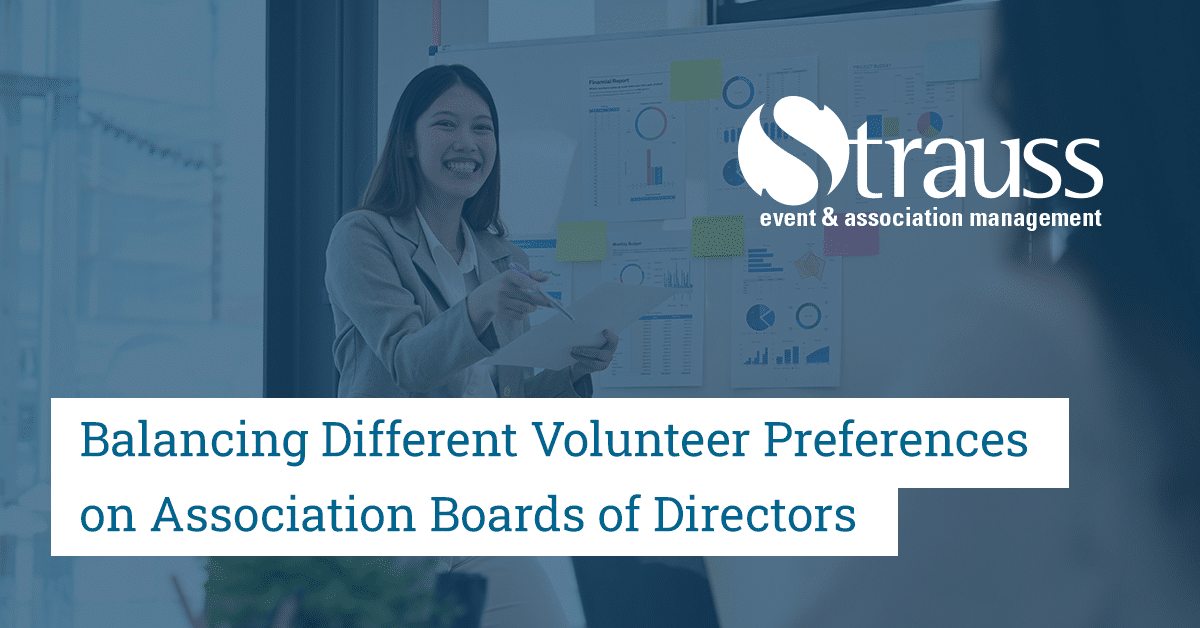Coming out of the pandemic, I have noticed a divergence amongst Board members as to when they’re available to volunteer. Some opt to do all their volunteer work during office hours to preserve their personal time, while others don’t have flexibility in their schedule to volunteer during traditional work hours.
It is essential to recognize and balance the different needs and availability of volunteers serving on the same Board of Directors. Board members may have different schedules, personal commitments, and preferences for when and how they want to contribute. Effective communications, and planning are key to accommodating the needs and availability of Board members, building a strong and engaged Board community.
Balancing the Needs & Availability of Board Members
One approach to balance the needs and availability of Board members is to establish a clear framework for meeting schedules and expectations. This framework should consider the needs of all Board members, including those who prefer to volunteer during business hours and those who prefer evenings or weekends. By establishing a regular schedule for Board meetings and committee meetings, Board members can plan and prepare for their participation in advance.
Strauss’ article back to the basics: being an association Board member explores the role of Board members in establishing a strong framework for meetings and expectations. This includes providing clear guidelines on attendance requirements and establishing a system for managing absences and tardiness.
To address the differing availability of Board members, consider alternating the time and day of meetings, or offering remote participation options, to ensure all members of the Board can attend and participate. This will not only accommodate the needs of individual Board members but also promote inclusivity and encourage diverse participation and perspectives.
Our article on virtual meetings for your association Board shares strategies for managing remote Board meetings effectively, including addressing technical issues, setting clear agendas, and ensuring equal participation among remote and in-person attendees.
Set Expectations & Responsibilities for Board Members
It is also essential to establish a clear set of expectations and responsibilities for Board members, including attendance requirements and duties. Board members must understand their role and the commitment required to fulfill it effectively. By establishing clear expectations and responsibilities, Board members will feel more confident in their role and be more likely to contribute consistently.
Our article on stepping into association management – roles and responsibilities provides helpful tips for developing a clear and comprehensive set of expectations. This includes identifying core responsibilities, setting measurable goals, and providing ongoing feedback to Board members.
To accommodate individual Board member preferences, consider offering a range of engagement opportunities that are available outside of regular Board meetings. These opportunities may include participation in subcommittees, special projects, or community events. By providing Board members with various opportunities to participate, they can find areas that best align with their interests and schedules, ultimately contributing more effectively.
Effective Communication is Key
Effective communication with Board members is critical for ensuring they are informed and engaged with the association’s activities and objectives. Consider scheduling regular check-ins and providing ongoing updates on projects, activities, and objectives. By providing regular communication, Board members will feel more connected to the association, leading to greater engagement and participation.
Strauss’ article on the importance of clear, concise and timely communication highlights strategies for promoting effective communication between Board members and association executives. This includes developing communication protocols, providing regular updates, and using technology to streamline communication processes.
Balancing the different needs and availability of volunteers serving on the same Board of Directors is essential for building a strong and engaged Board community. By establishing clear expectations, offering flexible scheduling and communication, and providing a range of engagement opportunities, associations can foster a positive and collaborative environment.

